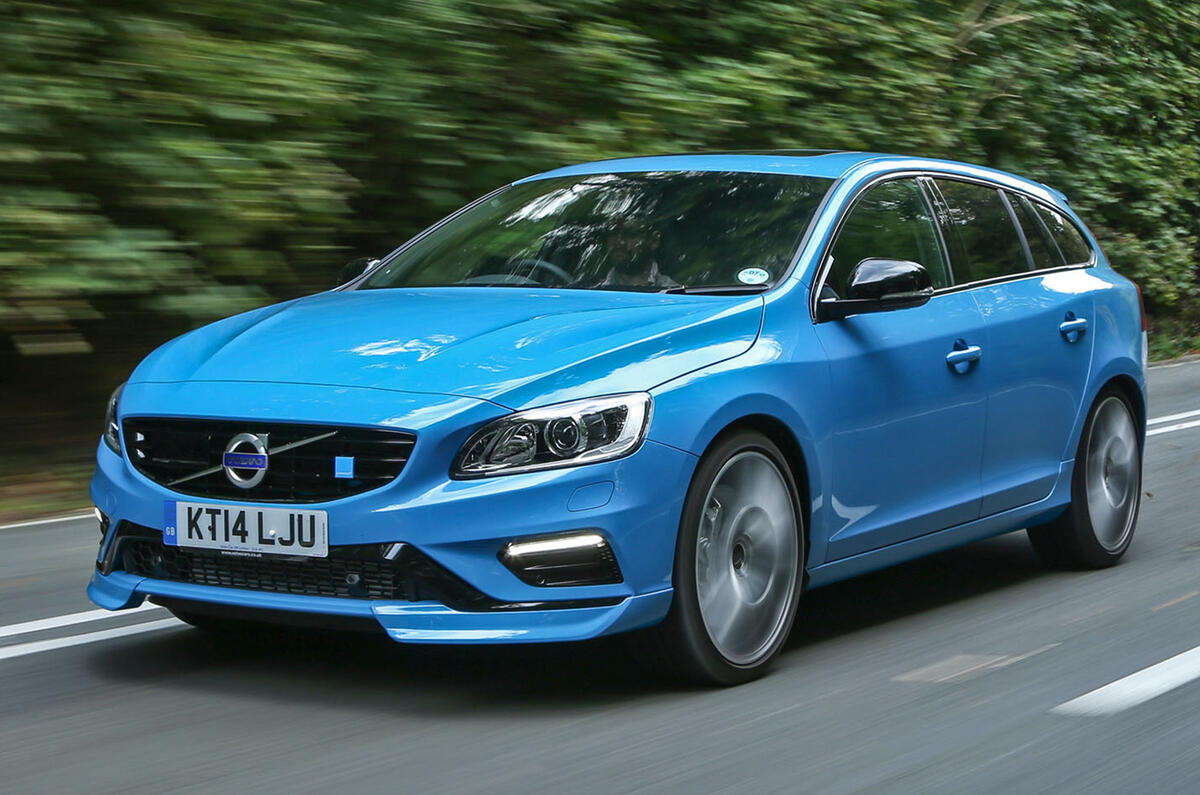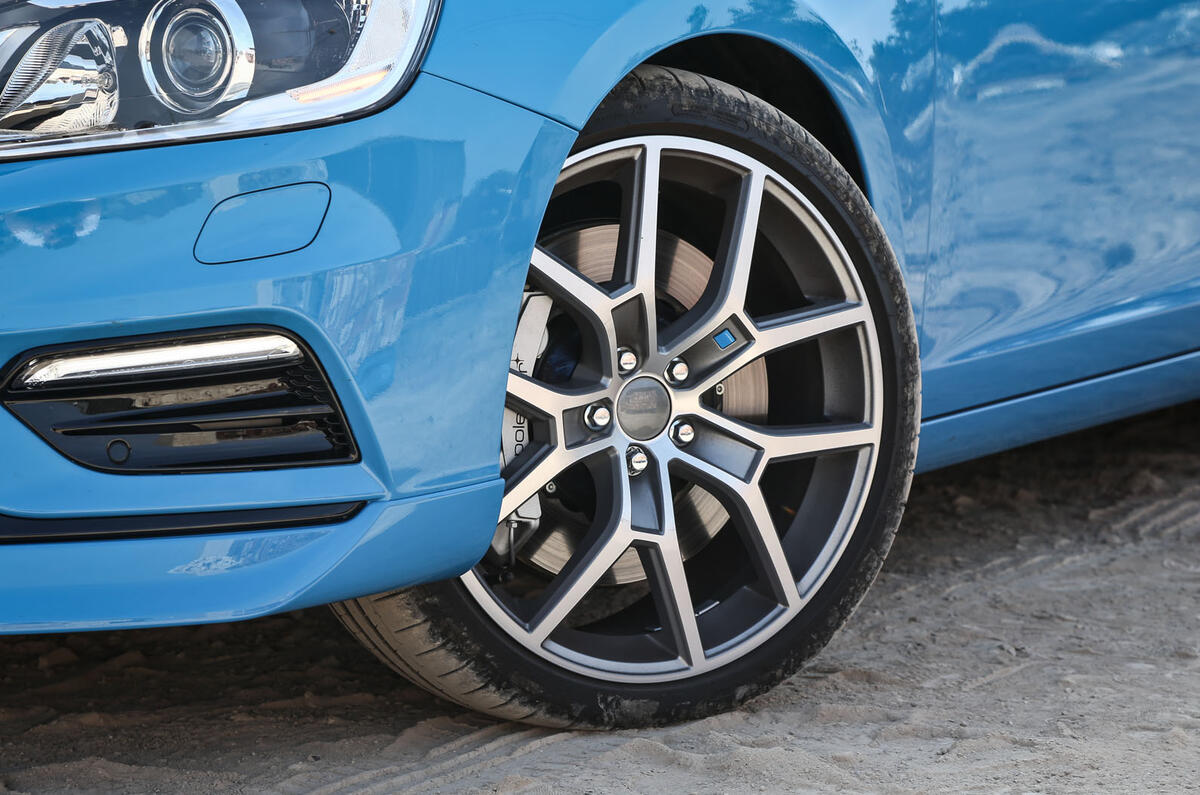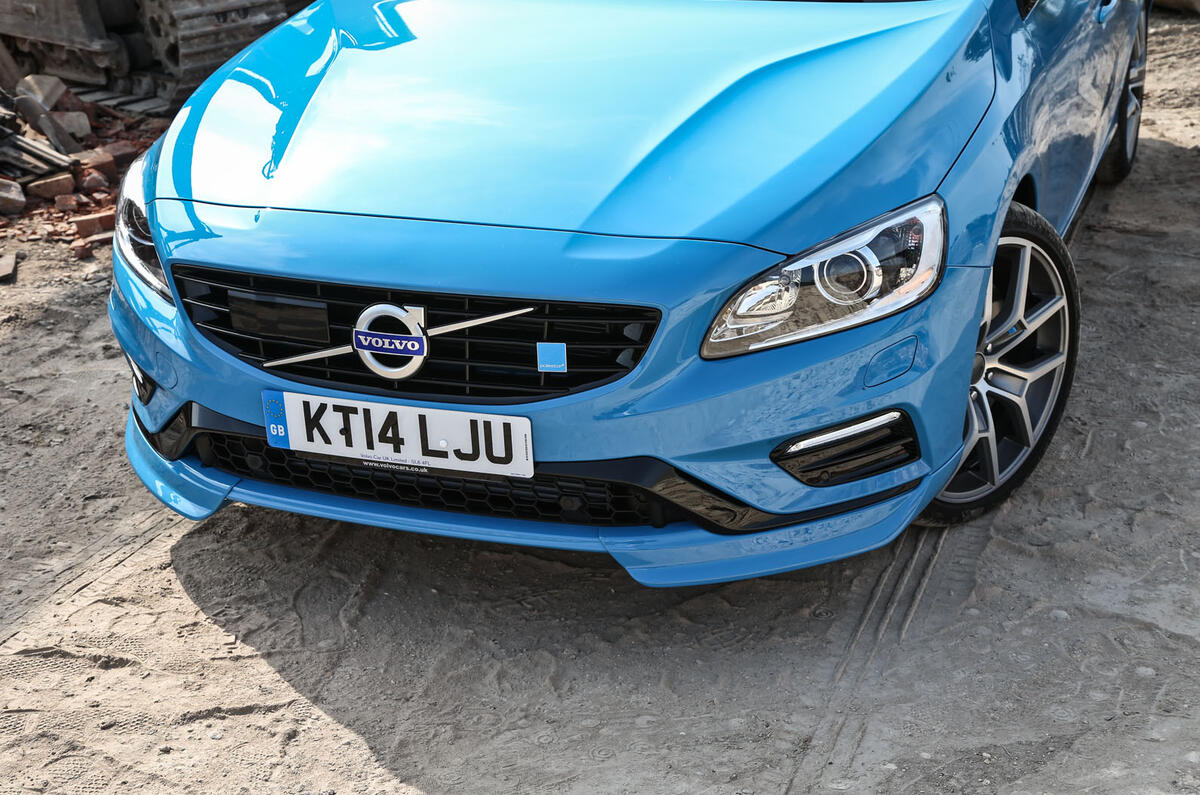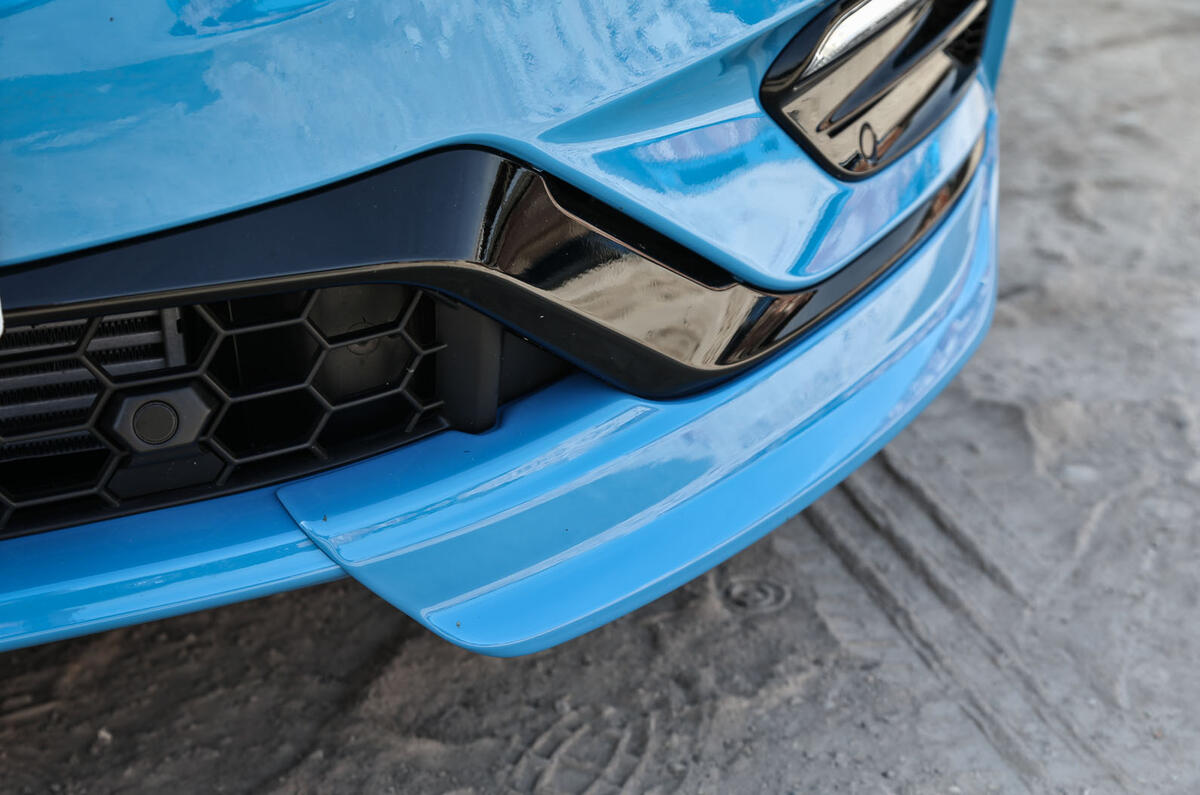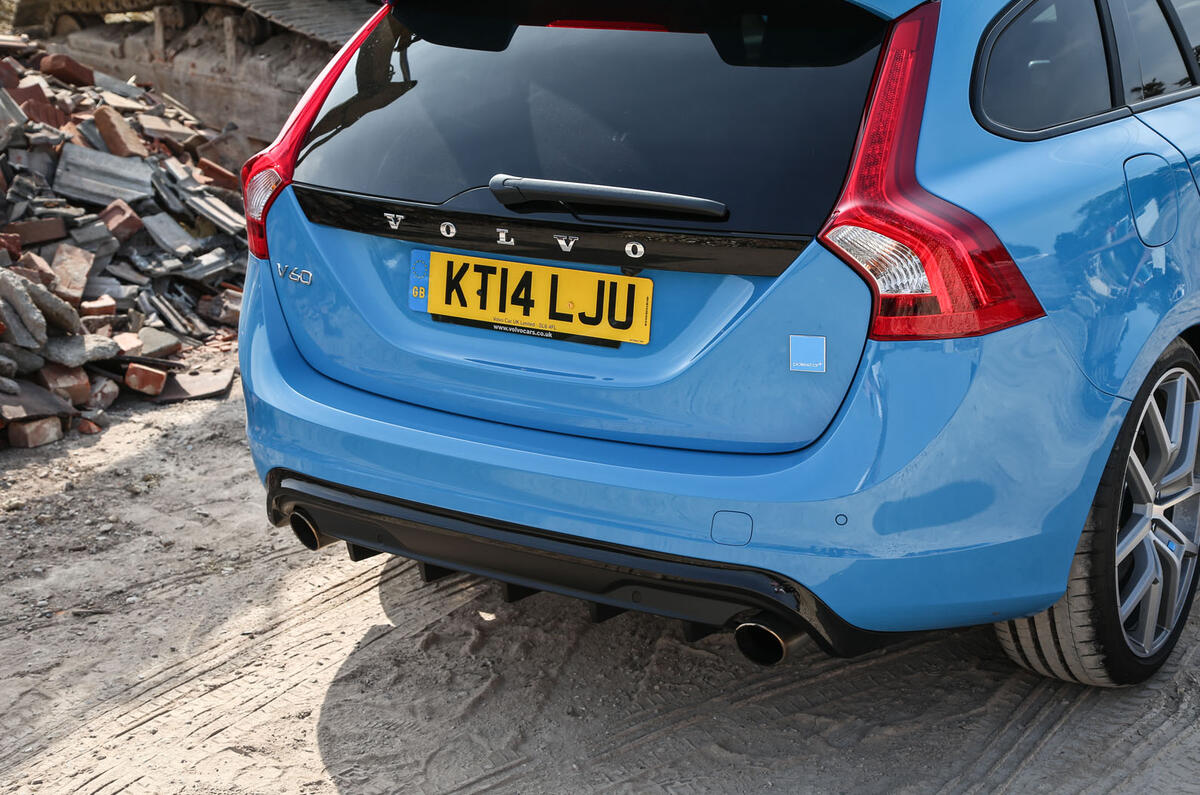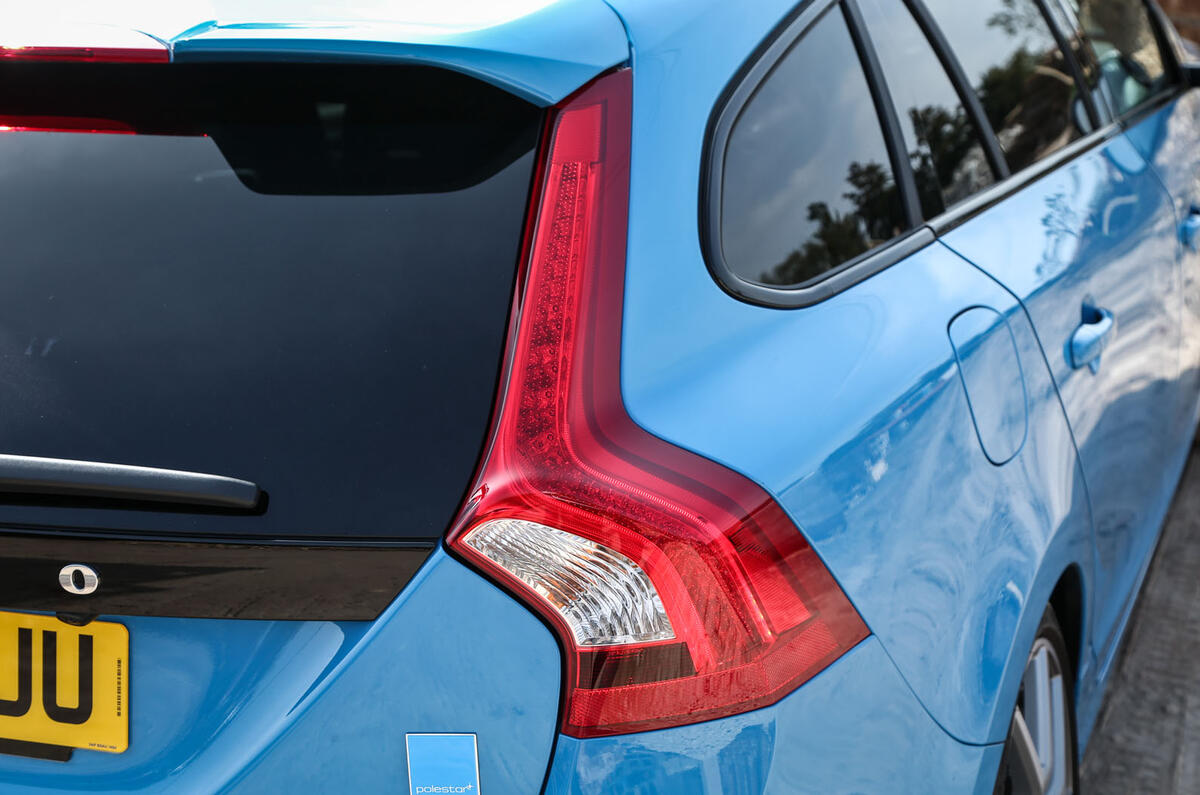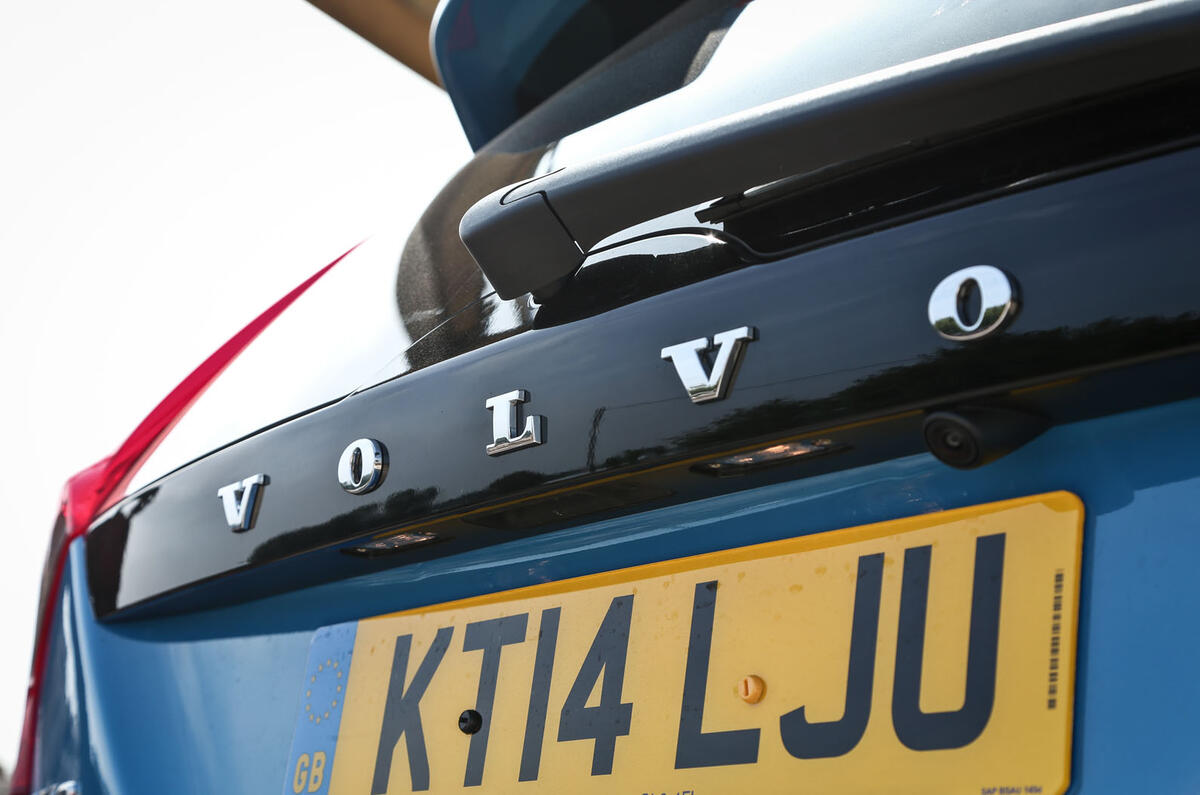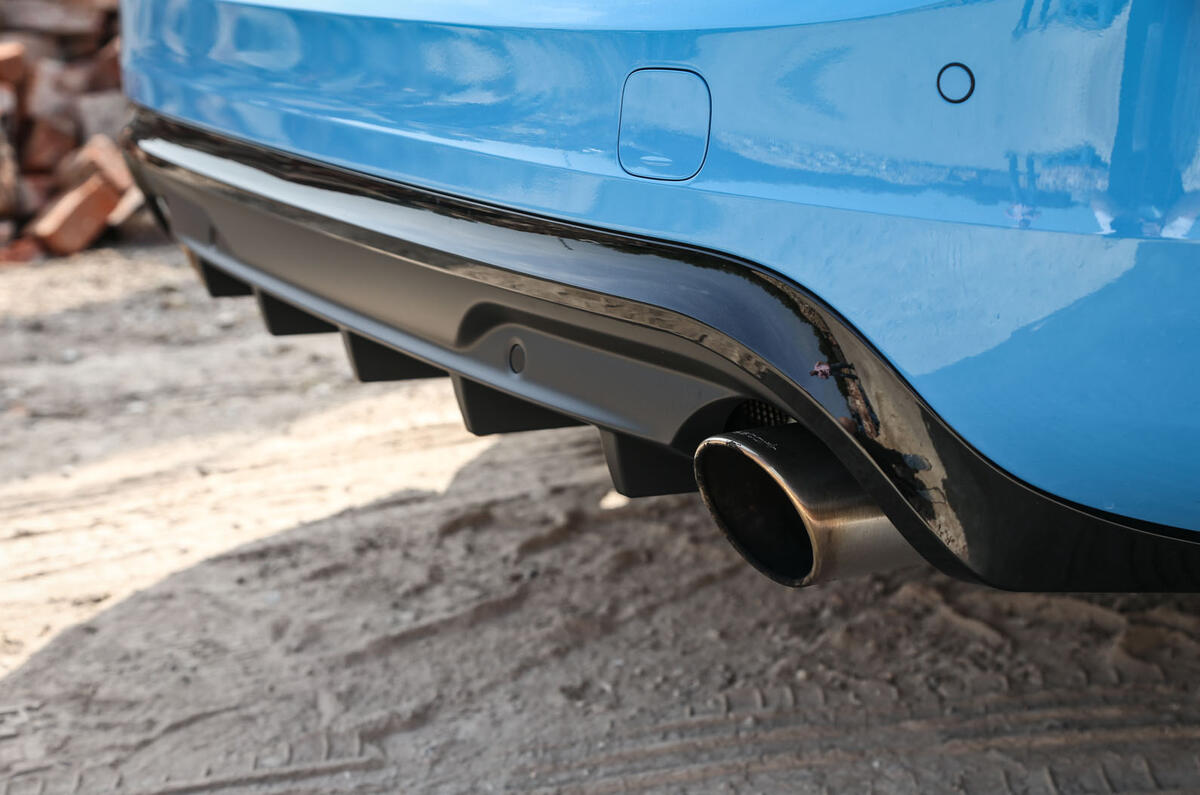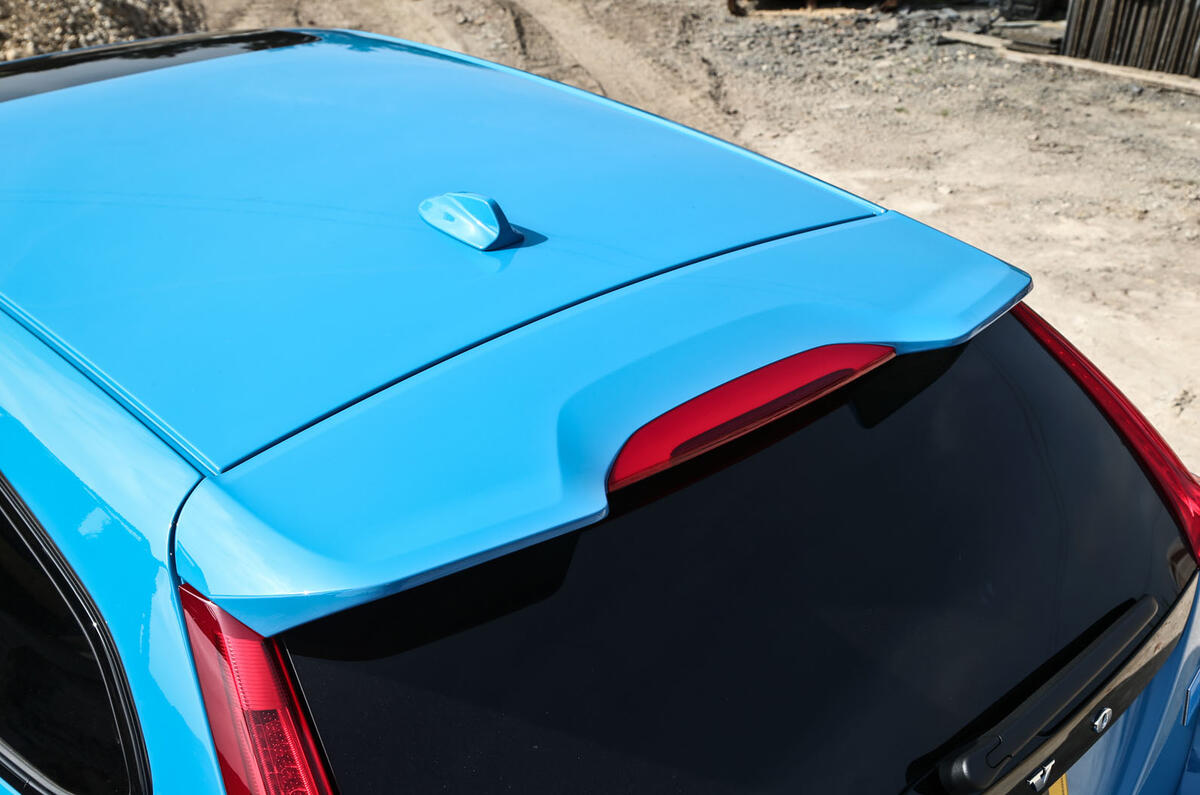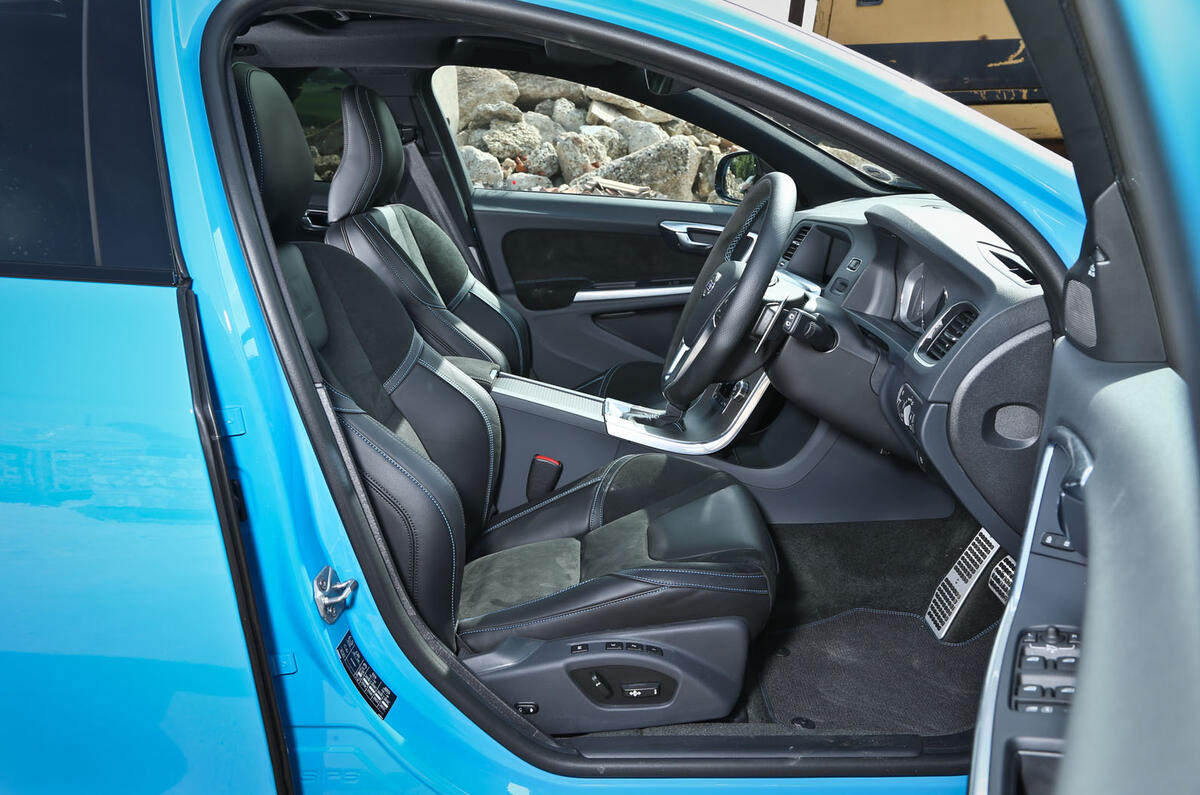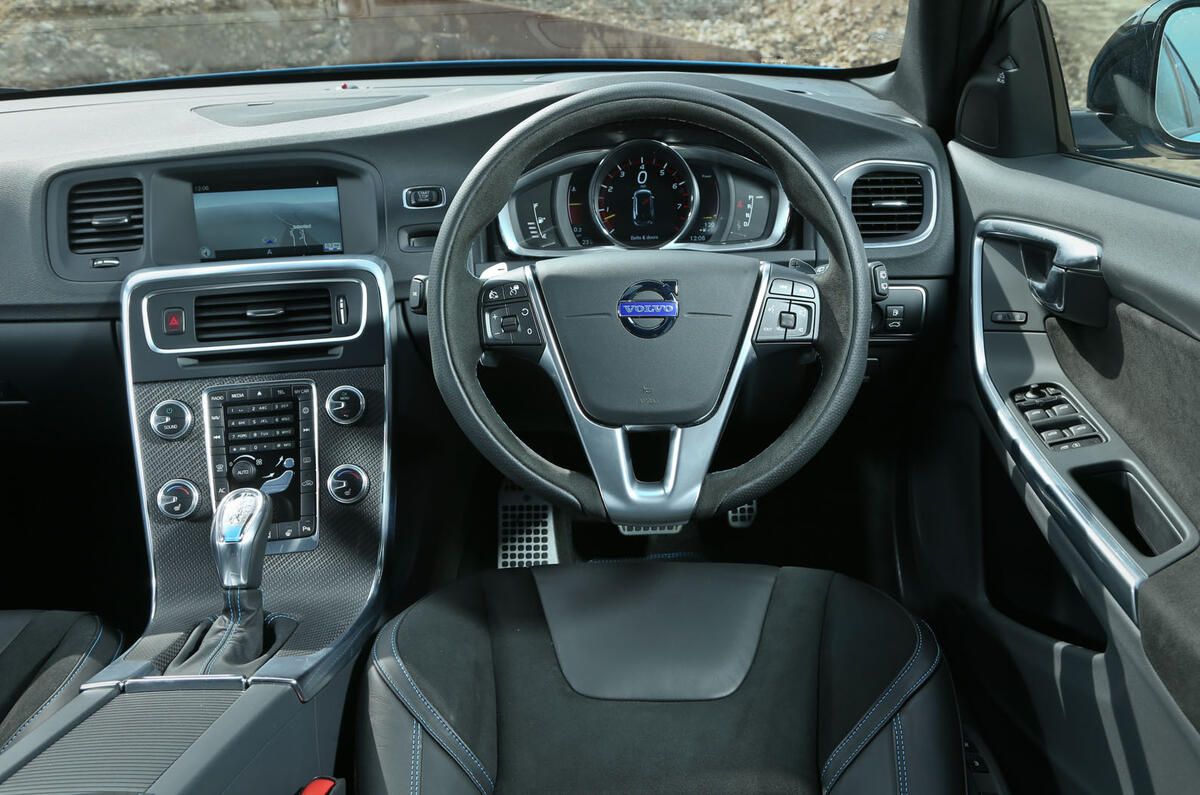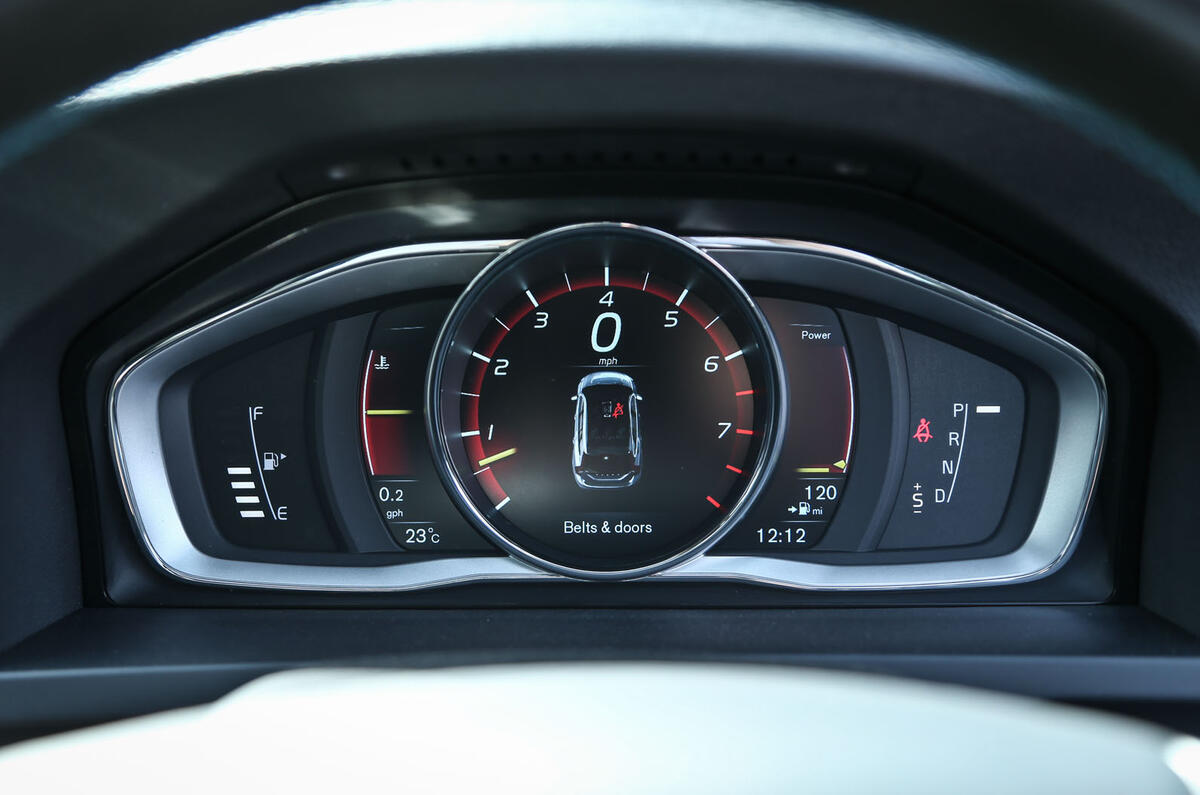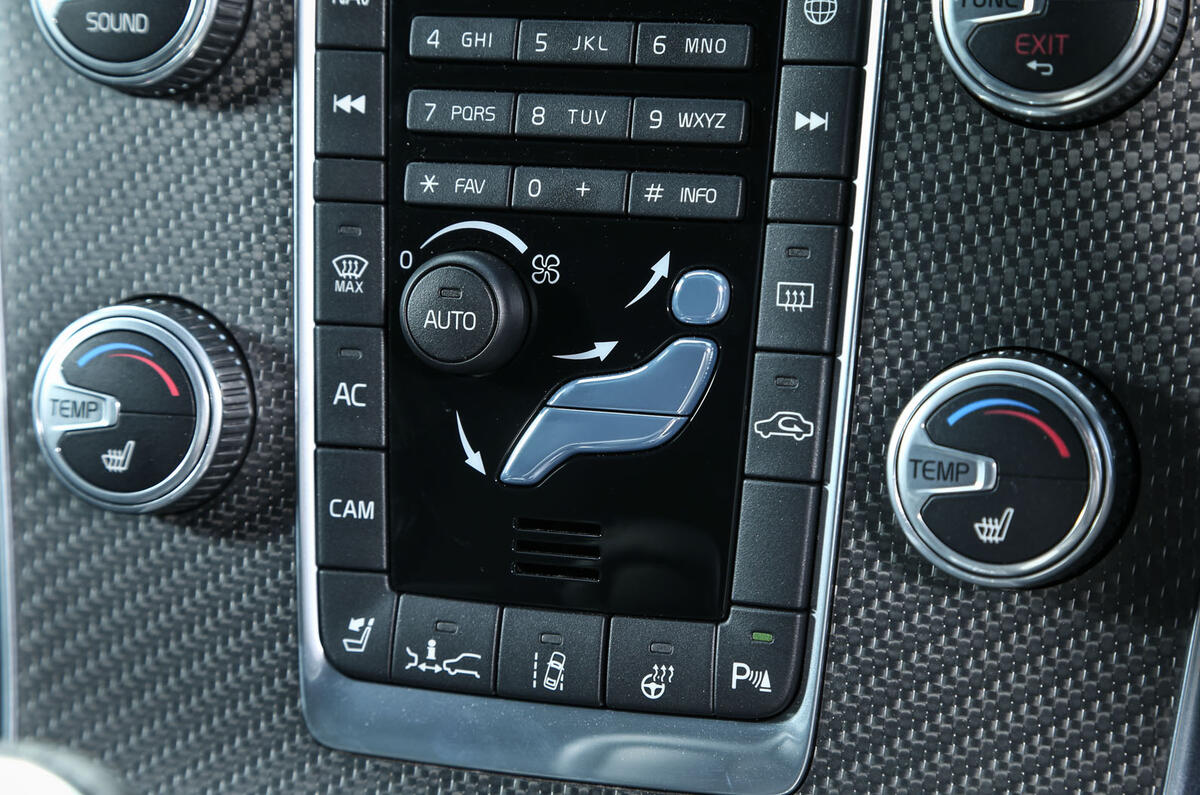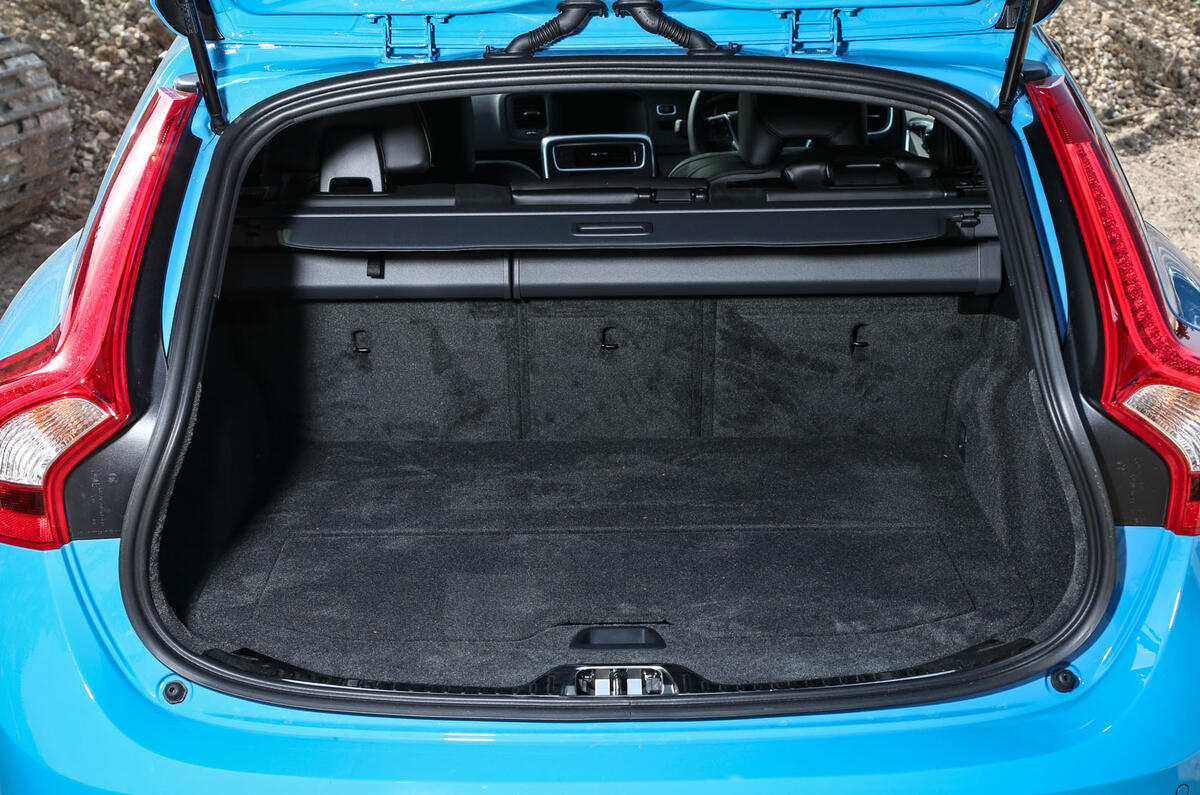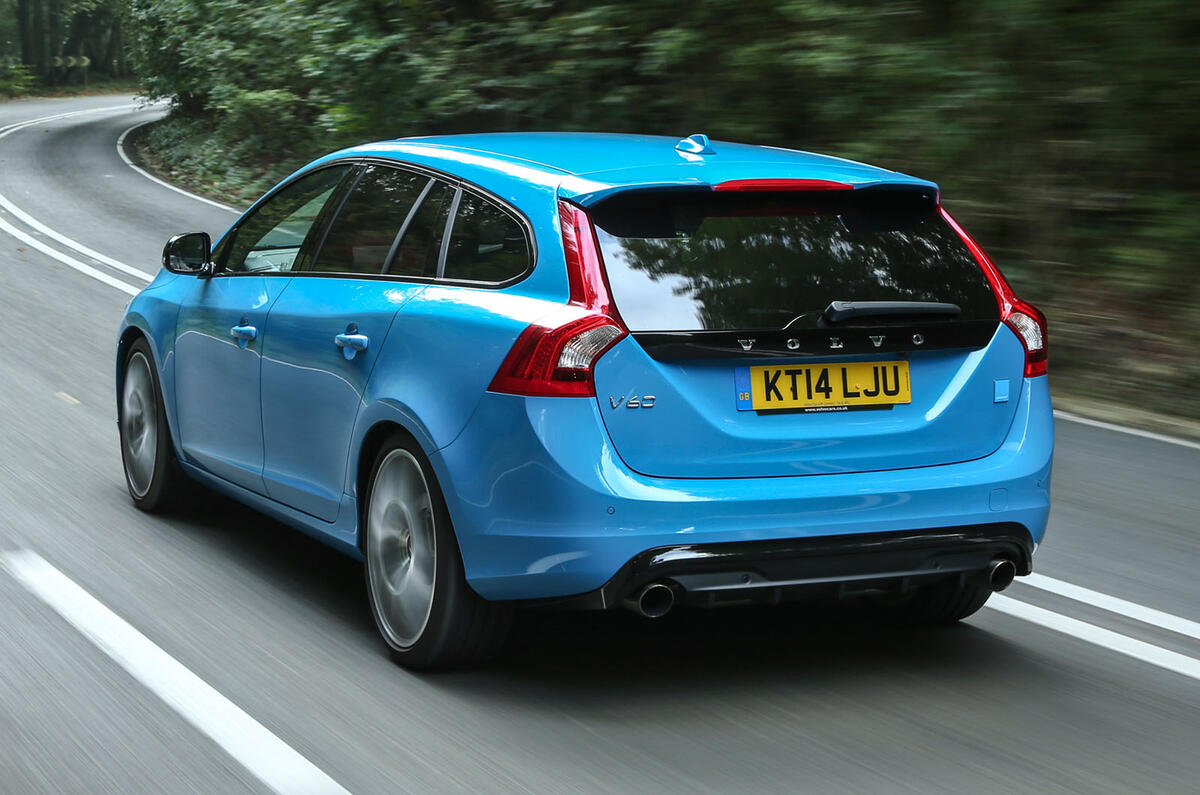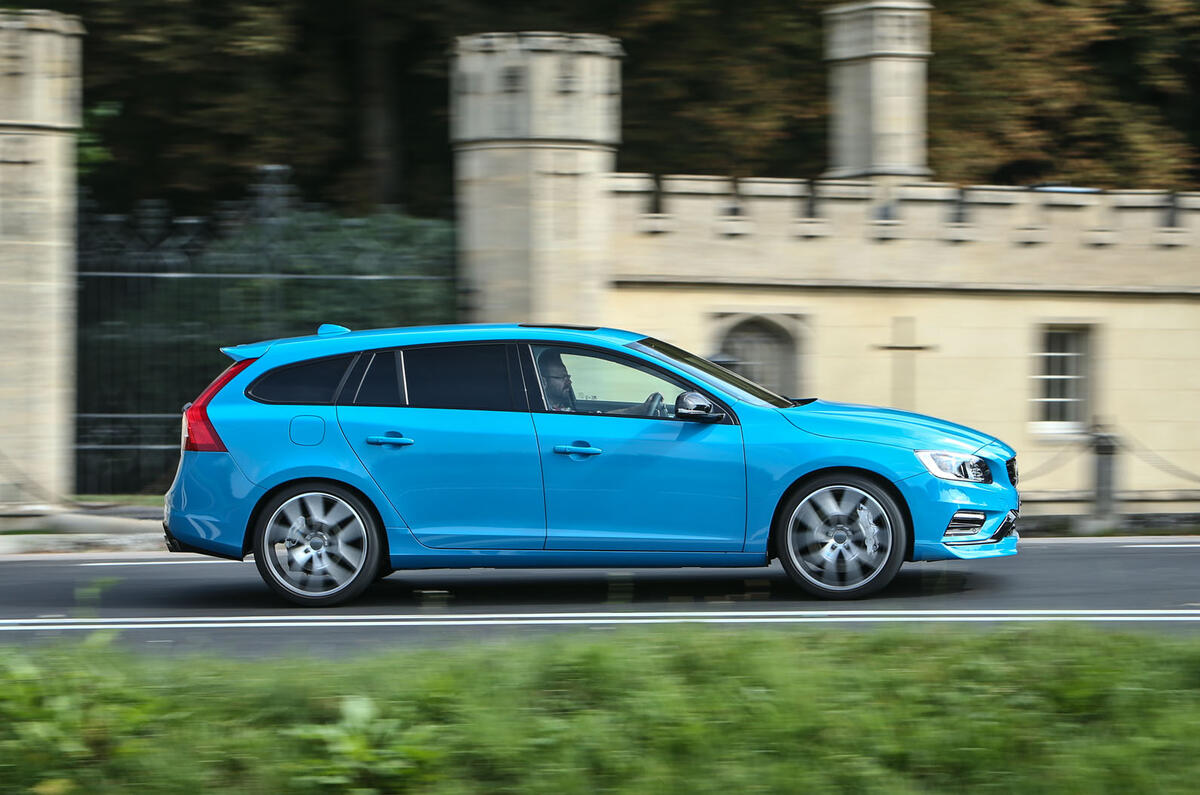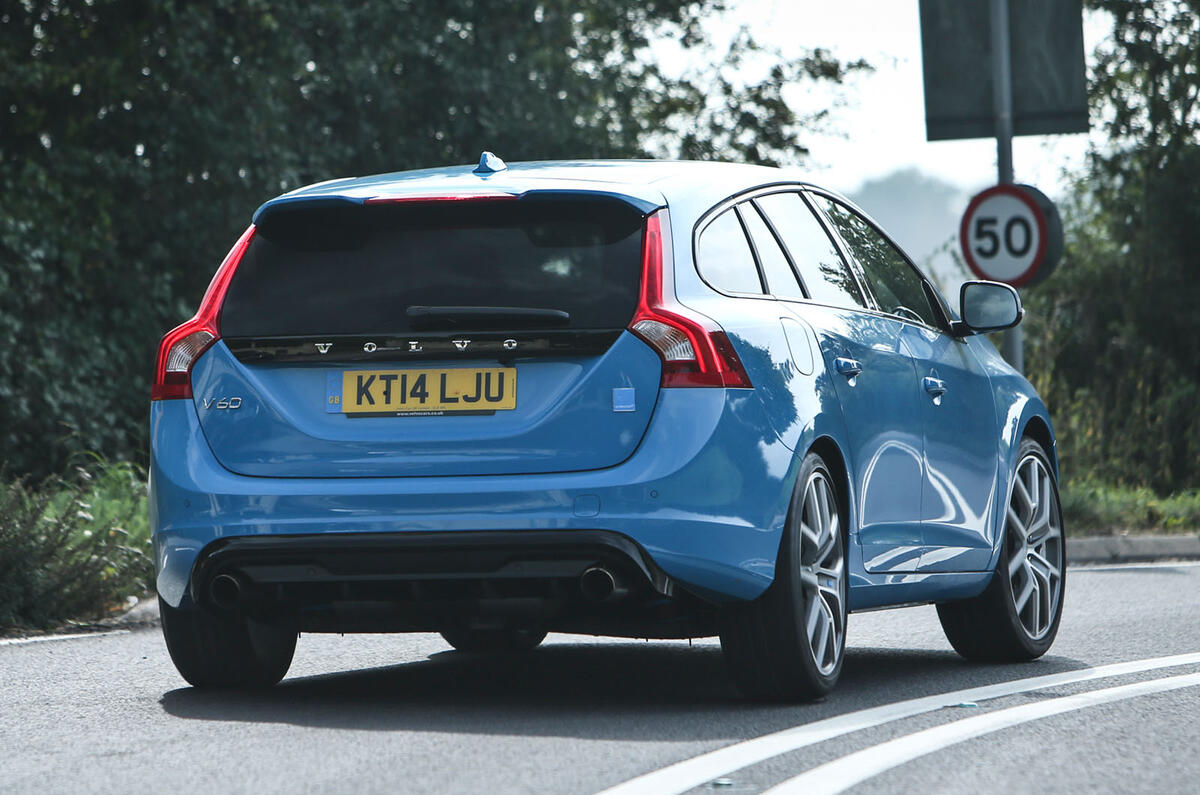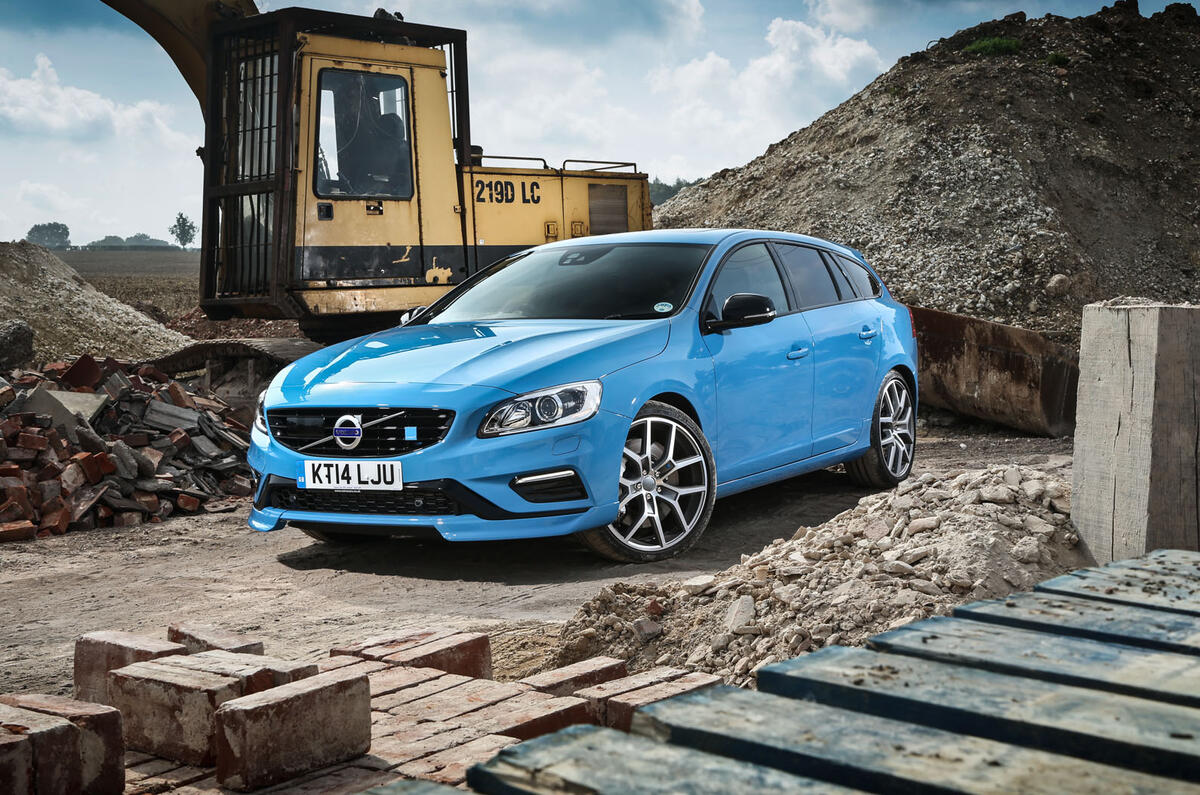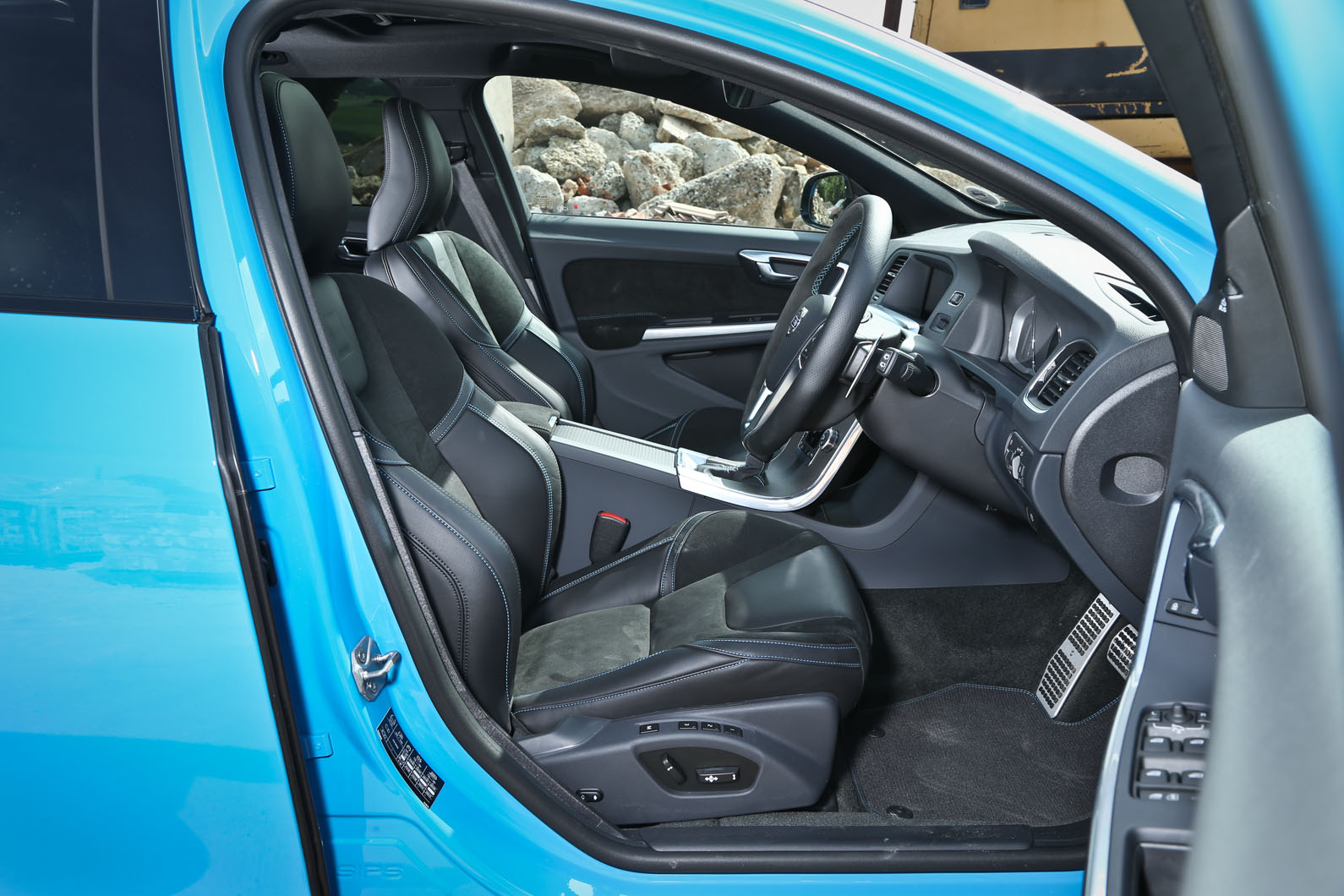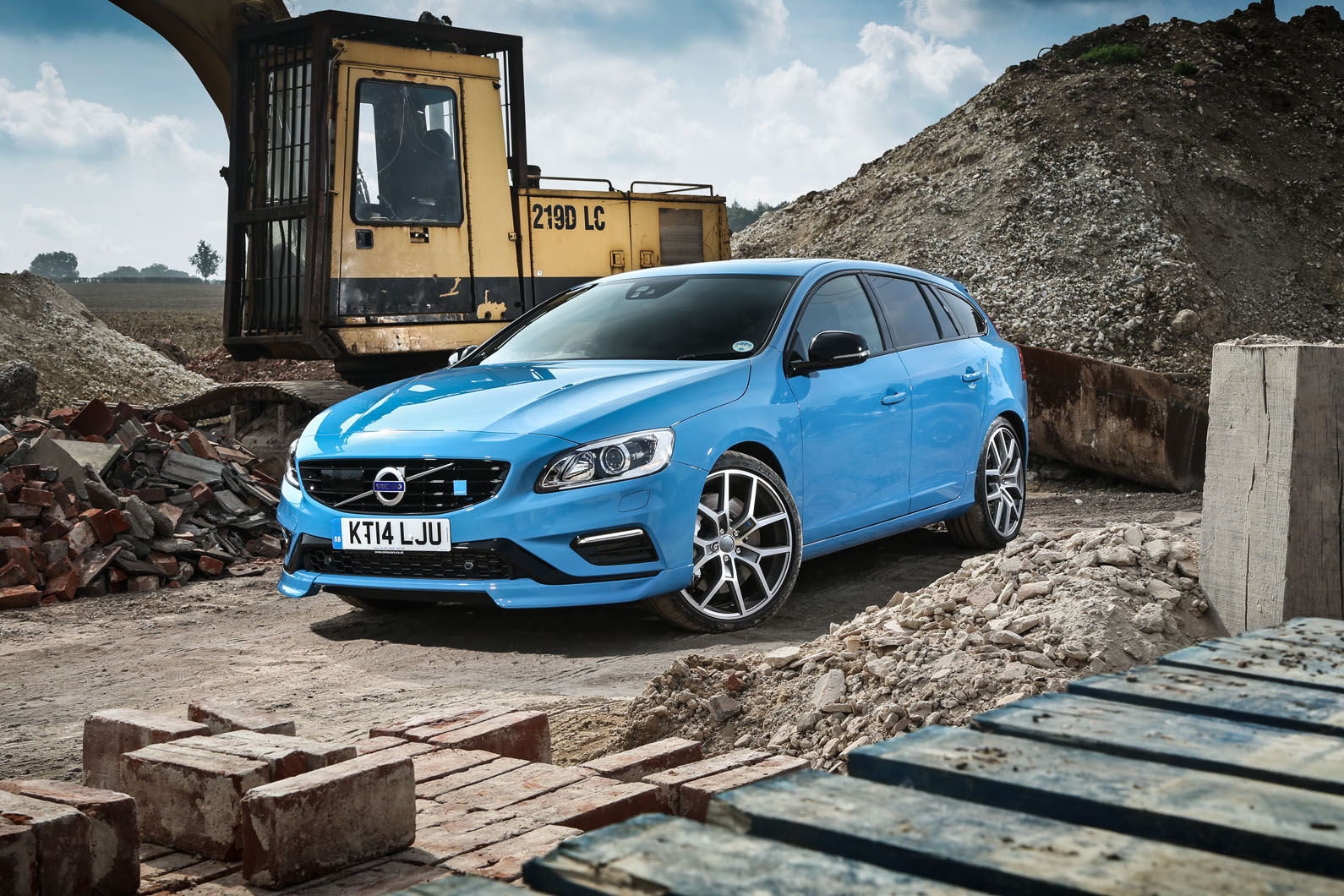Shiny alloy pedals, some carbonfibre-effect centre console trim, sports seats and a pair of wheel-mounted gearshift paddles. These are the changes that instantly identify a V60 Polestar’s cabin from its rangemates – and at first, they don’t seem like much for your money.
But there’s more than first meets the eye to this gently purposeful cabin if you take the time to uncover the details.
All Polestars come with a mix of dark charcoal leather with downy nubuck suede panelling and contrasting blue stitching.
It’s just about sporty enough to give the car a performance flavour, but it’s far from over the top. In fact, it’s spot on.
The driver’s seat feels high-mounted when you settle into it – Volvos always give good visibility first and foremost – but headroom and legroom are generous enough and the seat itself is typically comfortable and supportive.
There’s plenty of adjustment in the steering column, while the wheel itself has a perforated leather outer rim and an Alcantara inner. You can brush the latter with your fingertips, but it won’t wear as quickly there as it might elsewhere on the rim. There’s pragmatic thinking for you.
The instruments are conveyed via a TFT display, with interchangeable modes for the outer readouts that are perfectly clear and easily swapped. The central multimedia system is navigated via the upper rotary knobs on the centre stack and the shortcut keys around the inner console. These are the kinds of solid, fixed buttons you can find without needing to take your eyes off the road, and they feel like they’ll last. There isn’t a touchscreen interface in sight.
Passenger space isn’t outstanding, but it’s competitive for a compact executive wagon. Boot space is slightly below par for the class, but it’s still quite plentiful. A standard folding front passenger seatback only adds to the carrying capacity.
The sub-£50k Volvo comes with plenty of kit as standard, as you'd expect, including climate control, xenon lights, parking sensors, a rear view camera, lane departure warning and an electric sunroof. The manufacturer’s Sensus infotainment system comes with, a 12-speaker Harman/Kardon surround sound audio system with a DAB tuner, sat nav, DVD player, Bluetooth, and a hard drive.
The multimedia set-up pairs quickly with your mobile phone and, once it has, serves up a web browser and a range of web apps through the seven-inch colour display when the car is stationary. The screen is beginning to look small by premium-brand standards, but it’s decently clear and bright. The system also features a USB input, Bluetooth media streaming, DVD playback and hard disc music storage.
The satellite navigation system gets points for simplicity and ease of use, if not for dazzling mapping detail or technical sophistication. It’s voice-programmable and gives clear directional instructions in plenty of time for a turn.



